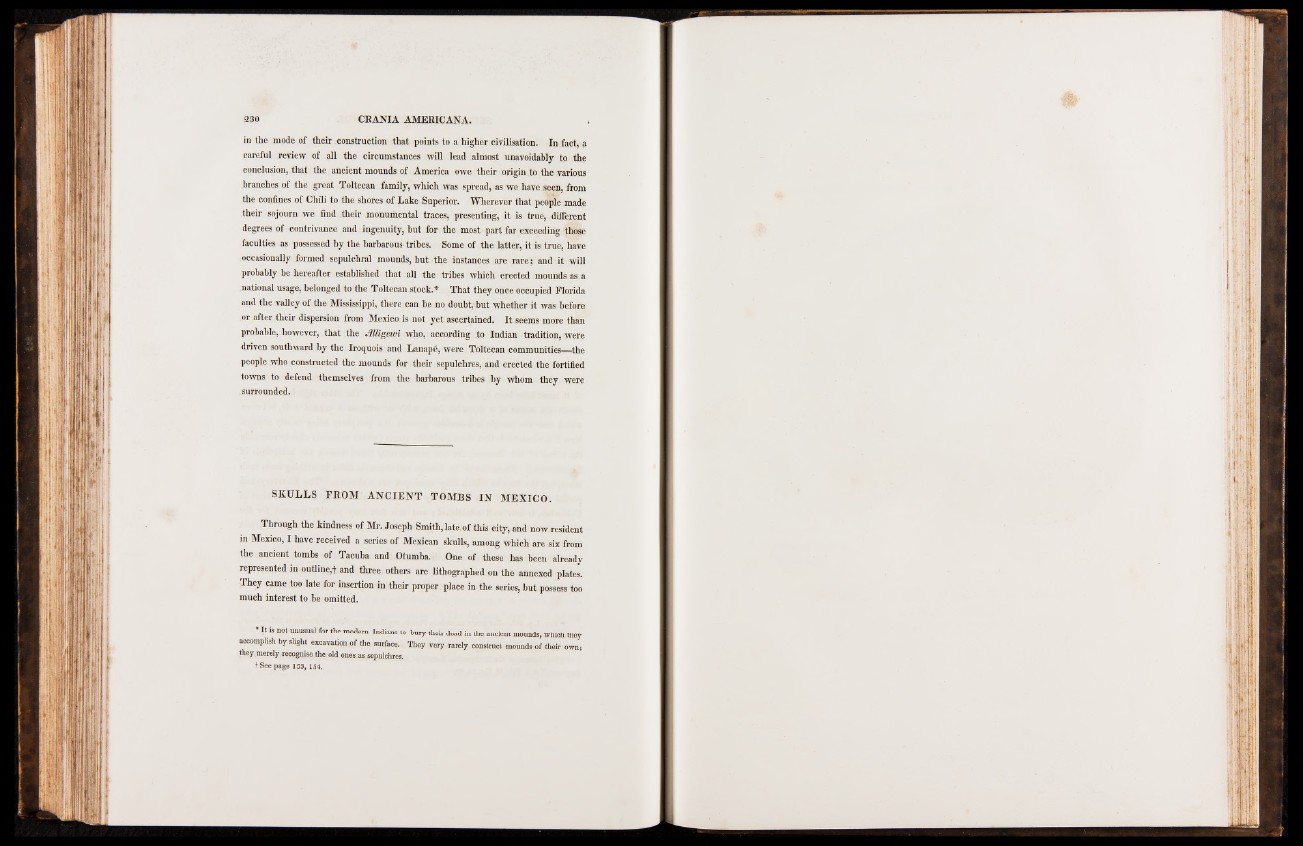
in the mode of their construction that points to a higher civilisation. In fact, a
careful review of all the circumstances will lead almost unavoidably to the
conclusion, that the ancient mounds of America owe their origin to the various
branches of the great Toltecan family, which was spread, as we have seen, from
the confines of Chili to the shores of Lake Superior. Wherever that people made
their sojourn we find their monumental traces, presenting, it is true, different
degrees of contrivance and ingenuity, hut for the most part far exceeding those
faculties as possessed by the barbarous tribes. Some of the latter, it is true, have
.occasionally formed sepulchral mounds, but the instances are rare; and it will
probably be hereafter established that all the tribes which erected mounds as a
national usage, belonged to the Toltecan stock.* That they once occupied Florida
and the valley of the: Mississippi, there can be no doubt,-but whether it was before
or after their dispersion from Mexico is not yet ascertained. It seems more than
probable, however, that the Jllligewi who, according to Indian tradition, were
driven southward by the Iroquois and Lanape, were Toltecan communities—the
people who constructed the mounds for their sepulchres, and erected the fortified
towns to defend themselves from the barbarous tribes by whom they were
surrounded.
SKULLS FROM A N CIEN T TOMBS IN MEXICO.
Through the kindness of Mr. Joseph Smith, late.of this city, and now resident
in Mexico, I have received a series of Mexican skulls, among which are six from
the ancient tombs of Tacuba and Otumba. One of these has been already
represented in outline,! and three others are lithographed on the annexed plates.
They came too late for insertion in their proper place in the series, but possess too
much interest to he omitted.
* It is not unusual for the modern Indians to bury their dead in the ancient mounds,.which,they
accomplish by slight excavation of the surface. They very rarely construct mounds of their own;
they, merely .recognise the old ones as sepulchres,
t See page 153, 154.